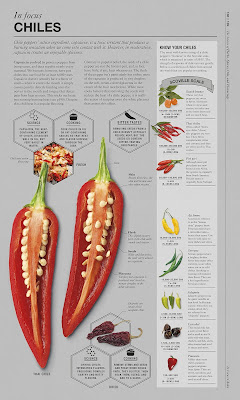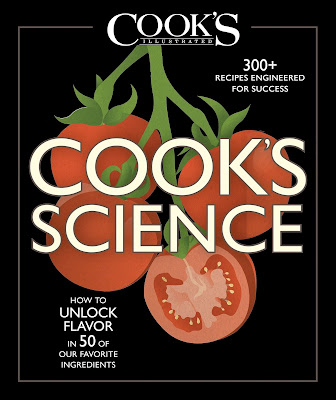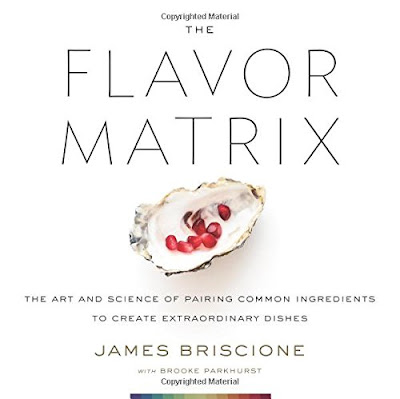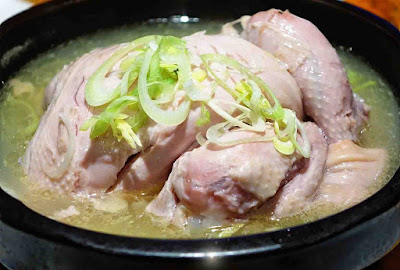Science and technology are sources that can be tapped to enable new culinary inventions or cooking techniques.
This list is the ultimate books for science nerds who cook. You will learn new applications of physics and chemistry in cooking. Master simple concepts to enjoy a lifetime of success in the kitchen.
These books will give scientific explanations of numerous topics, including why brining your Thanksgiving turkey is not a good idea, why food wrapped in plastic often tastes like plastic, why you should never refrigerate tomatoes.
What is Culinary Physics?
The kitchen is a laboratory and cooking is an experimental science. Heating, freezing, mixing and blending are all processes used in the laboratory and the kitchen.Culinary physics is the application of scientific method to cookery. Physics of cooking is about understanding the science of phase transitions. A better appreciation of what is happening when you are cooking. Reference: https://doi.org/10.1186/2044-7248-2-5
Culinary physics seeks to investigate the physical and chemical transformations of ingredients that occur when cooking.
Culinary physics is a modern approach to cooking, and takes advantage of many technical innovations from the scientific disciplines. Open minded professional chefs are embracing scientific principles to create new approaches to cooking, food preparation and presentation.
Prominent science-based chefs include like Ferran Adria, Grant Achatz, Wylie Dufresne and others. They always strive to create the most delicious, technically exquisite food, and constantly apply analytical thinking and creativity to continually advance their cuisine.
How is Cooking Related to Science?
The process of cooking, baking, and preparing food is an application of science. It how a food may taste or react when baking or cooking.Which are the BEST Books to Understand the Physics and Chemistry of Cooking?
A lot of information but lacking photos on recipes.
Great for understanding ingredient fundamentals and how to use them correctly.
Most cookbooks concentrate on the "how", this one elucidates you the secrets of the "why".
Each chapter explains the science behind one of the 50 ingredients in a quick, educational article.
The book have 50 full-page color illustrations, giving in detail explanation at individual ingredients, "family trees" of ingredients, and cooking techniques like sous vide, fermentation and food dehydration.
The 400+ fail-safe recipes included will take the chemistry and physics of cooking into your kitchen.
50 ingredients, their characteristics and best uses:
1. Short Loin
2. Flank
3. Pork Loin
4. Pork Shoulder
5. Pork Belly
6. Chicken Breast
7. Chicken Wings
8. Lamb
9. White Fish
10. Salmon
11. Shrimp
12. Scallops
13. Lobster
14. Tofu
15. Eggs
16. Cream
17. Butter
18. Yogurt
19. Goat Cheese
20. Parmesan
21. Green Beans
22. Sweet Potatoes
23. Cauliflower
24. Mushrooms
25. Kale
26. Cabbage
27. Tomatoes
28. Garlic
29. Onions
30. Ginger
31. Dried Chiles
32. Apples
33. Strawberries
34. Oranges
35. Coconut
36. Pasta
37. Whole-Wheat-Flour
38. Brown Rice
39. Cornmeal
40. Oats
41. Quinoa
42. Cannellini Beans
43. Lentils
44. Olive Oil
45. Stock
46. Red Wine
47. Honey
48. Balsamic Vinegar
49. Bittersweet Chocolate
50. Almonds
9) The Science of Cooking: Understanding the Biology and Chemistry Behind Food and Cooking
Very, very detailed cooking chemistry, almost like organic chemistry in college.
Written as a reference book with an online laboratory manual for students and adopting faculties. This book is intended for non-science majors and covers a range of scientific principles of food, cooking and the science of taste and smell.
Every chapter starts with chemical, biological, and physical principles underlying food topics, and a discussion of what is happening at the molecular level.
This kind of approach is should be attractive to chemistry, biology or biochemistry departments looking for a new way to bring students into their classroom.
8) The Science of Cooking: Every Question Answered to Perfect Your Cooking, Check this book on Amazon.com
 |
| Photo credit: The Science of Cooking, Dr. Stuart Farrimond |
This is not a recipe cookbook.
Get fast answers to all your cooking science questions, and cook tastier, more nutritious food using basic principles, practical advice, and systematic techniques.
Using full-color images, stats and facts through infographics, and an engaging Q&A format to explain you how to master your cooking skills.
“The Science of Cooking” brings food science, chemistry in cooking, physics and cooking out of the laboratory and into your kitchen.
Topics include poultry and meat, seafood, dairy, grains and pulses, spices, fruits, vegetables, herbs, baked goods, and more, making it suitable for perfecting everyday cooking.
I highly recommend this book for anyone who is perfecting his or her cooking skills.
If you are a fan of J. Kenji Lopez-Alt and his cookbook "The Food Lab," you will love this unofficial companion book as well.
Comparing those two books, Kenji's book is like a dictionary that explains you what foods pair well and provide some reasons why, whereas this book tells you how flavors fit together perfectly, and how to prepare any meat and vegetable for the desired flavor of choice.
7) The Flavor Matrix: The Art and Science of Pairing Common Ingredients to Create Extraordinary Dishes
One of Smithsonian Magazine's Ten Best Food Books of the Year
If you a sort of person who just flips open a cookbook and start reading recipes, this book may not be for you.
This is a groundbreaking ingredient-pairing guide, based on a famous chef's pioneering research into the chemical basis of flavor. The Flavor Matrix shows how science can unlock unheard-of possibilities for combining foods into amazingly creative dishes.
The Flavor Matrix will help you think like a professional chef at home.
James Briscione (Director of Culinary Development at the Institute of Culinary Education in New York) took the ideas from his time with the supercomputer (IBM’s supercomputer Watson) and offers a scientific perspective at how flavors break down and pair up.
Using a modified color wheel for foods like Brassica and crustaceans, he reveals surprising flavor pairings, offering practical recipes to prove his theory.
Briscione distills chemical analysis of different ingredients into easy-to-use infographics, and give easy recipes that he has created with them. The result of his intensive research and incredible creativity in the kitchen.
If you are looking for new recipe inspiration or a creative cooking foundation, this is the reference book for you. It can serve as a starting point in the creation of a ton of interesting new dishes using the flavor profiles alone.
It gives you real information of why's and how's of ingredient matching, formulating your recipes, and quick techniques when cooking.
The Flavor Matrix is a must-have for home cooks and professional chefs alike. Your only flavor-pairing manual you will ever need and really use.
6) Check out this Amazon deal: Heston Blumenthal at Home
Totally self-taught, Heston Blumenthal is the most progressive chef of his generation.
In 2004, he won the popular three Michelin stars in near-record time for his restaurant The Fat Duck, which has twice been voted the Best Restaurant in the World by an international panel of 500 experts.
In 2006, he was awarded an Order of the British Empire.
Heston Blumenthal can help you do it at home. There are 150 specially chosen recipes in the “Heston Blumenthal at Home”.
Great buy. This is the cookbook to prove that science can dramatically improve the way we eat.
Each section (soup, salad, meat, veggies) starts with a few pages of key information that investigates into the cooking science that is of practical use to the home cook.
There are practical tips on everything from how to dress lettuce greens and how to poach fish easily. It runs the whole range from soups and starters down through dinners, lunch, desserts and drinks.
It takes home-style dishes, things like roast chicken, meat pies, potato leek soup, chili, and elevates to perfection. There is a good reason roast chicken is such a familiar dish during special occasions. The roast chicken recipe in this cookbook will remind you of that reason.
5) On Food and Cooking: The Science and Lore of the Kitchen
A kitchen classic on physics behind food.
This is the best book for anyone interested in cooking that is also a nerd.
There are no recipes in this book; it is more like a culinary textbook that explains composition and origins of various ingredients. I repeat... this is NOT a recipe book.
The first edition of this book started it all in the science of cooking book category, in 1984, huge mobile phones (cost $4,000, like $9,000 today), computer mouse and Sony Walkman were all novelties.
Today, blog and books currently discuss the science of cooking, and culinary schools offer "experimental" courses that investigate the science or whys of cooking. On Food and Cooking has really been the standard for science-based cooking since the 1980s.
On Food and Cooking pioneered the application of technical food science into cook-friendly kitchen science and popularized the inventive culinary movement known as "culinary physics."
Harold McGee, a writer who specializes in the chemistry of food and physics of cooking, has completely rewritten his 1984 classic, expanding it by two thirds into a book that weighs in at approximately 900 pages.
McGee's is the most thorough, he gives comprehensive and scientific explanations of numerous topics.
This book is perfect for reading or skimming over if you just want to get down to it.
4) Check out this Amazon deal: Modernist Cuisine at Home
 |
| Photo credit: Nathan Myhrvold, The Cooking Lab, Modernist Cuisine at Home |
456-pages, great photography, excellent recipes.
This is not a cookbook for everyone because not everyone really likes superb food. Alternatively, likes being able to make dish in their own kitchen that surpass their local restaurants or diners. If food for you is just fuel, forget about “Modernist Cuisine at Home”.
On the other hand, if you remember special meals, remembers certain dishes of your past with certain pleasure, and likes to savor your food, rather than swiftly swallowing it down so you can watch Netflix, this cookbook is for you.
If you buy this cookbook, you get 2 books. It comes with a condensed spiral companion book. Pages are water splash proof, great for keeping in the kitchen for quick reference.
In this cookbook, you will learn how to stock a modern kitchen, master Modernist techniques, and make hundreds of spectacular new recipes, including pressure-cooked caramelized carrot soup, sous vide–braised short ribs, and silky smooth Mac and cheese.
You will also learn about the science behind your favorite dishes, how to utilize sous vide cooking techniques, and why pressure cookers are perfect for making soup.
Related POST: 10 Best Molecular Gastronomy Kit that Will Help You Cook Easily Like a PRO
PROS: Whys Should You Get This Book?
a) Included with a separate water-resistant "kitchen manual" with every recipe inside so you can keep the stunning main-book away from the disarray of the kitchen.
b) Eye-catching pictures and easy step-by-step images for most of the recipes
c) Included with 4 prints you can frame in your home.
d) Delicious recipes using easy to get ingredients for lunch, breakfast, dessert, and dinner. A wide selection of meat (pork, beef and others), poultry, fish and vegetable recipes.
e) Explains the "why" of cooking, not just the "how".
f) Well built or book binded. You could easily hit anyone to death with this big book if you caught him stealing your sous vide circulator.
g) It has a bookmark ribbon you see in a bible.
h) Even though the recipes ingredients are designed using weights in metric system, approximate volume measurements are included.
i) Currently one of the best book available for home sous vide cooking.
CONS: Why Should You Consider Other Book from the List?
Though it says "at Home" in the book title, your average kitchen will most likely lack some of the basic tools used in several recipes only. At a minimum, you will need a digital scale, Sous Vide setup, a pressure cooker, and a whipped cream siphon.
3) The Science of Good Cooking: Master 50 Simple Concepts to Enjoy a Lifetime of Success in the Kitchen
The “Science of Good Cooking” is comprehensive cookbook and the explanations will help make you a better more informed cook than the usual recipe-oriented books.
Fifty unique kitchen science experiments from the test kitchen bring the science to life, and more than 400 landmark Cook's Illustrated recipes demonstrate each of the basic principles at work.
The Science of Good Cooking breaks down why food cooks a certain way and which methods are best for what purpose.
These kitchen experiments range from simple to playful to innovative - showing you why you should fold (versus stir) batter for chewy brownies, why you whip egg whites with sugar, physics of cooking chicken, and why the simple addition of salt can make meat juicy.
There is a section called "why this works" following each recipe, which explains the science behind each step. For instance why use a certain type of marinade, and cooking technique to achieve a desired outcome. It is not just a list of recipes.
Years of experience are not the prerequisite for becoming a good cook; knowledge is. This cookbook is an owner's manual for your kitchen.
2) Meathead: The Science of Great Barbecue and Grilling, Add to your wishlist at Amazon.com, click the blue link
This is the most comprehensive barbecue cookbook you can get on Amazon.com. This is the definitive guide to the concepts, methods, equipment, and accessories of barbecue and grilling.
If you only buy one barbecue cookbook in your life, this is the best one ever published.
This science of barbecue cookbook that is intended at cooks who don’t just want a single good rack of ribs coming off their grill, but who want to understand what makes them delicious and how to repeat it every time. The book blends chemistry, physics, and meat science with hundreds of full-color photos.
The founder and editor of the world's most popular BBQ and grilling website, AmazingRibs.com, Meathead applies the latest research to backyard barbecue cooking with more than 100 thoroughly tested recipes.
With scientific research by physicist and food scientist Prof. Greg Blonder, PhD, of Boston University, he explains why dry brining is better than wet brining;
how marinades really work,
physics of cooking chicken,
why rubs should not have salt in them,
the importance of digital thermometers,
why searing doesn't seal in juices,
how salt penetrates but spices don't,
when charcoal beats gas and when gas beats charcoal,
how to calibrate and tune a grill or smoker,
how to keep fish from sticking; cooking with logs,
the strengths and weaknesses of the new pellet cookers,
tricks for rotisserie cooking; why cooking whole animals is a bad idea,
which grill grates are best; and why beer-can chicken is a waste of good beer and nowhere close to the best way to cook a bird.
You don’t have to buy the book, just read this… 13 Amazing Grilling Myths That Will Make You Cook Longer, Spend More and an Instant Skxawng- (Cooking Myths Reanalyzed)
1) The Food Lab: Better Home Cooking Through Science
A New York Times Bestseller
Winner of the James Beard Award for General Cooking
IACP Cookbook of the Year Award
The Food Lab is a thick collection of science based tips, explanations, techniques, and hundreds recipes for the home cook. It has over 1000 color photographs.
This is necessary reference and cookbook for home cooks.
The book contains close to 300 high-level American cuisine recipes.
This culinary physics book focuses on the science behind favorite American dishes, delving into the interactions between energy, heat, and molecules that produce great food. This is the best physics of cooking book ever.
J. Kenji Lopez-Alt demonstrates that often, conventional methods do not work that well, and home cooks can get far better results using new simple techniques. He described the science behind cooking so well and makes it so enjoyable and easy to read.
This science of cooking cookbook is brilliantly about applying science to make the dishes you like to cook and eat every day. Learn how to turn your favorite dish from good to impressive.
How the Culinary Science Books were Reviewed and Ranked?
The best chemistry and physics of cooking books were reviewed/selected because they are best selling and top rated by verified buyers on Amazon.com. The chemistry or physics of cooking books were selected from other hundreds of cookbooks sold on Amazon.com.The cookbooks were selected using meta-analysis of raw data mined (Python was used- web scraping/data mining) from Amazon reviews and popularity rating, Google SERP’s (search engine results page), Pinterest/Twitter/Goodreads, Eat Your Books, Facebook likes (reviews) and other sources (like forums and friends recommendations).
The cookbooks were purchased or borrowed from the library/friends and then compared. A few appealing recipes are recreated and tested in our home kitchen but not all of them.
Does Harvard University have a Culinary Program?
Science & Cooking: From Haute Cuisine to Soft Matter Science (physics)In this Harvard Culinary Program, top chefs and Harvard researchers explore how conventional and modernist cooking techniques can expound basic principles in physics, chemistry, and engineering.
Learn about elasticity, viscosity, mayonnaise, baking, and more science of cooking.
This culinary course will investigates physical transformations in food. World-famous chefs who use a number of diverse styles and methods in their cooking will visit the class.
You can also take this course online at Harvard have a Culinary Program. You can work at your own pace and earn a certificate from Harvard University by successfully completing the course work.
Watch Video Series here, application of physics in cooking video lectures
Does New York University (NYU) Steinhardt have a Culinary Physics Program?
In this NYU Steinhardt Culinary Physics program, students will learn basic principles of molecular gastronomy and modernist cuisine as framing procedure for understanding how food also functions in the context of bodily health, environmental health as well as cultural and political narratives.The class set-up is like physics in your kitchen lab.
Learn more here, Culinary Physics NYU Steinhardt.
Download Now, application of physics in food technology… physics of cooking pdf
All cooking is science: we use chemistry and physics to steam, fry, bake, or microwave almost all of our meals. However, there are some cooking methods that delve into even deeper and stranger scientific territory.












No comments:
Post a Comment